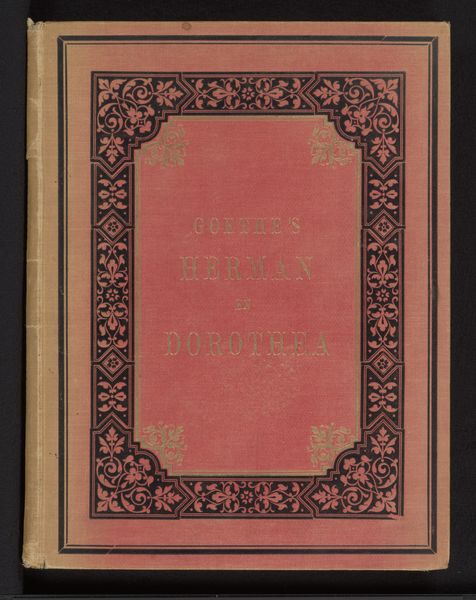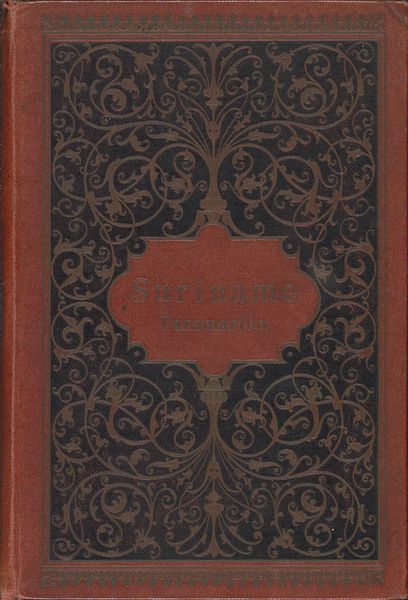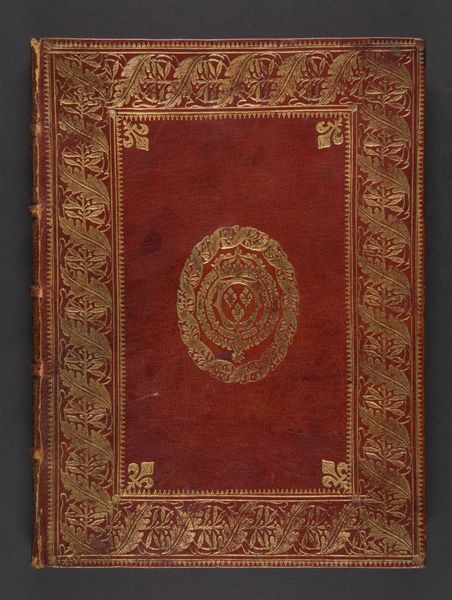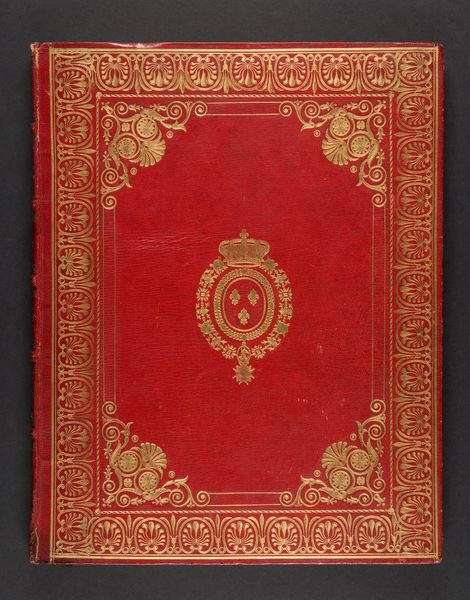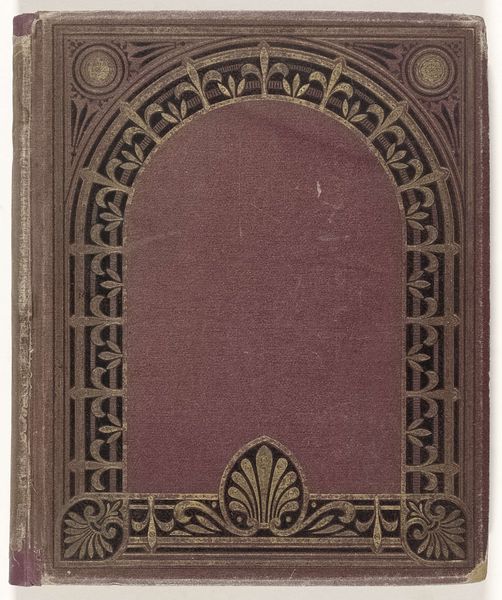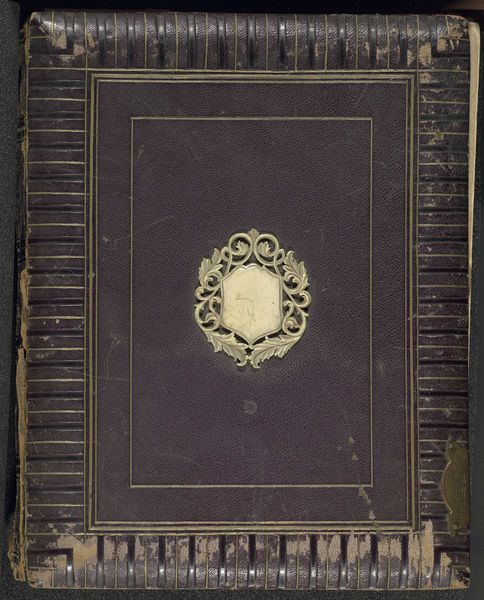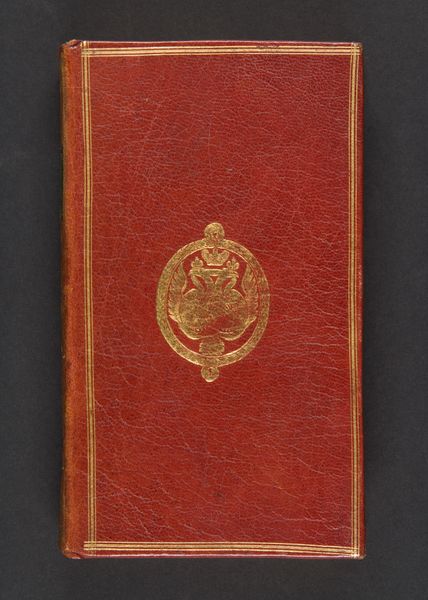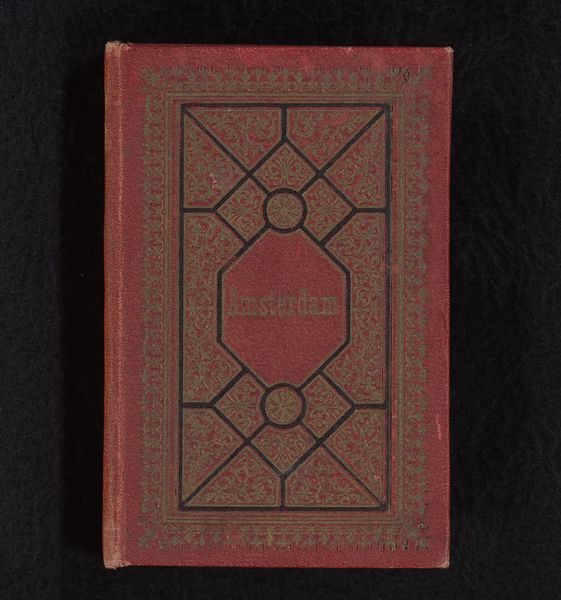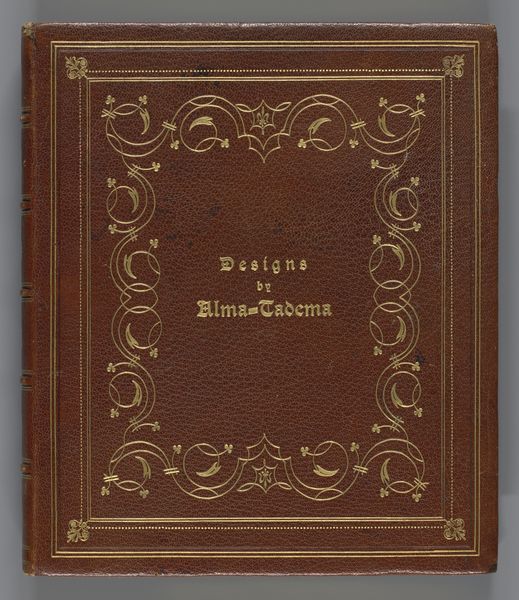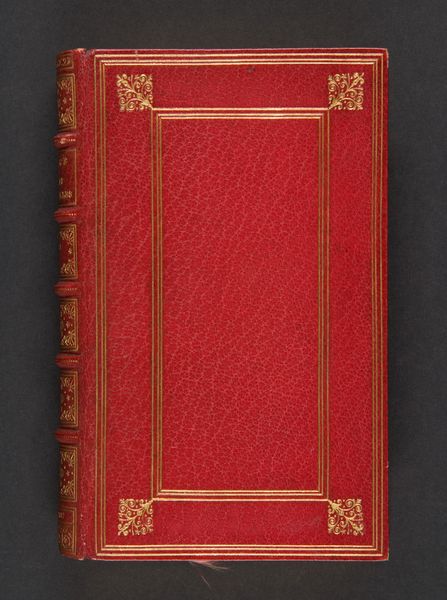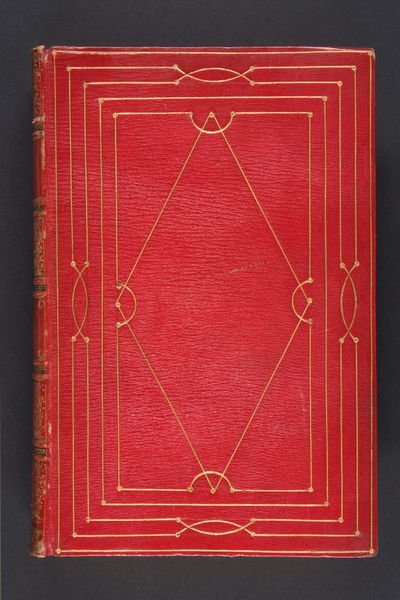
Dimensions: height 174 mm, width 244 mm, width 116 mm, thickness 150 mm
Copyright: Rijks Museum: Open Domain
Editor: So this is "Palmentuin in Frankfurt am Main," which translates to Palm Garden, from after 1871, by Johann Friedrich Stiehm. It's described as graphic art, and to me, it really gives off a sense of ornate elegance, like something you'd see on a beautifully bound book. The detail is just incredible. How do you interpret this work? Curator: The key to reading such imagery, particularly from the Art Nouveau period, is understanding the conversation between nature and geometry. Observe how organic forms – the leaves and vines – are stylized into repeating, almost architectural elements. This is not just decoration; it’s a visual echo of the period’s fascination with controlling nature, shaping it to fit societal ideals of beauty and order. Editor: Controlling nature... that's an interesting perspective! It does seem a bit paradoxical, using natural forms to create such rigid structures. Curator: Indeed. Look at the central cartouche framing the title. Its curves are both inviting and imposing. This reflects a larger cultural trend: a longing for a return to nature combined with the ambition of industrial progress. The choice of colour also resonates. The juxtaposition could symbolize vitality and restraint. What feeling do the color combinations evoke for you? Editor: That push and pull definitely comes through. For me, it's like trying to hold onto something wild while wanting to frame it and admire it in a controlled environment. Curator: Precisely. This piece embodies a tension inherent in its era, and its symbols continue to resonate with our modern relationship with nature. The graphic artwork holds layers of cultural meaning that are deeply anchored into shared social history and visual symbolism. Editor: I see it now – this artwork really has staying power due to that intricate, iconic symbolism, expressing so much. Thanks!
Comments
No comments
Be the first to comment and join the conversation on the ultimate creative platform.
